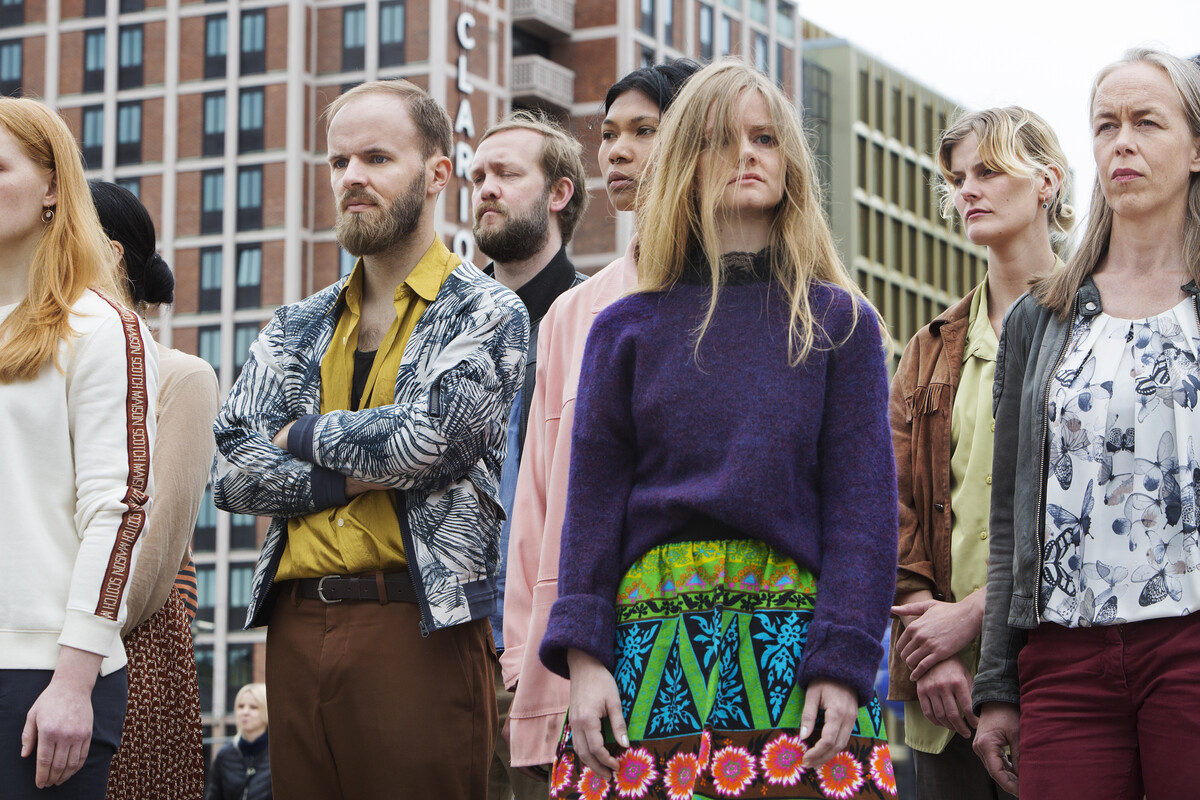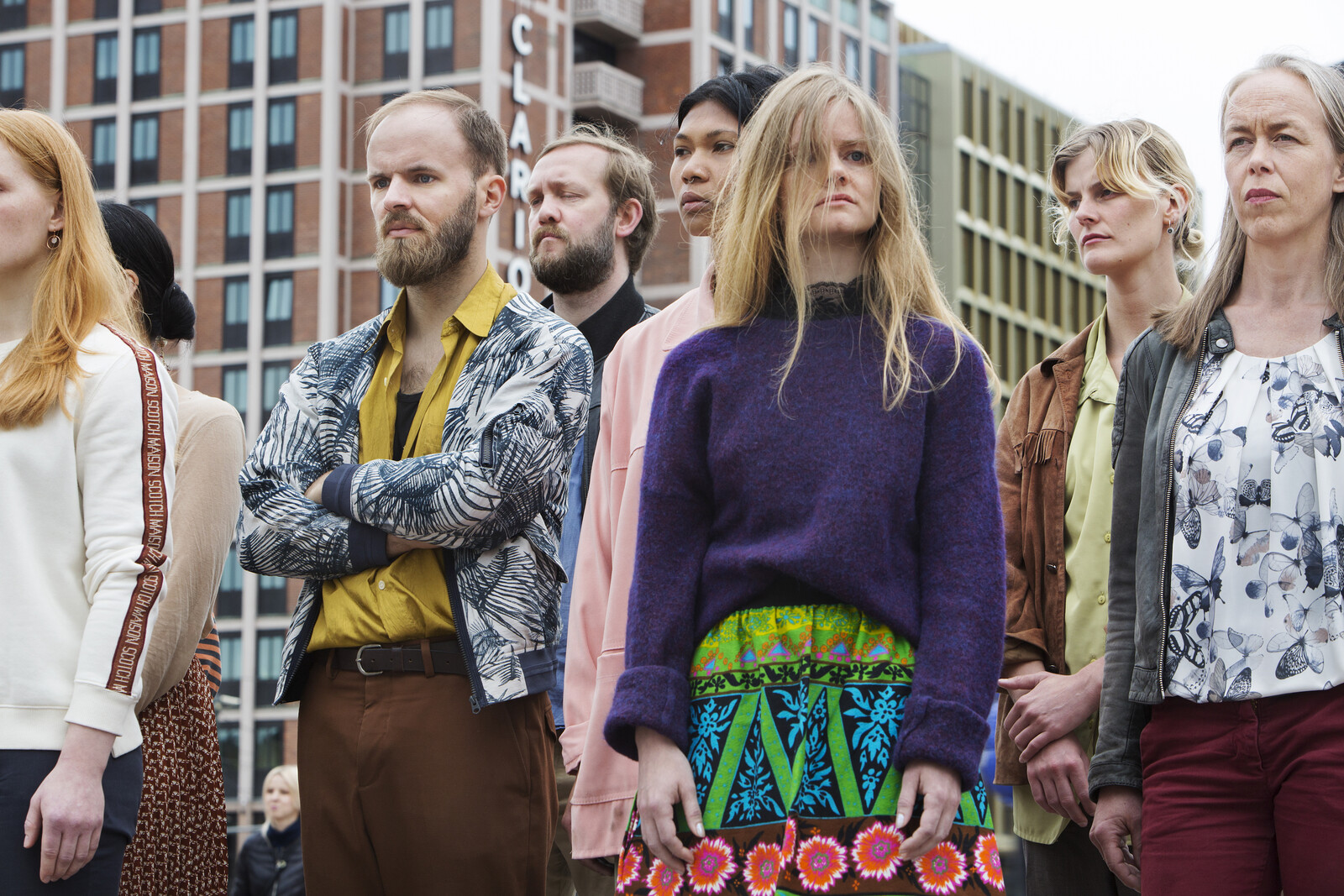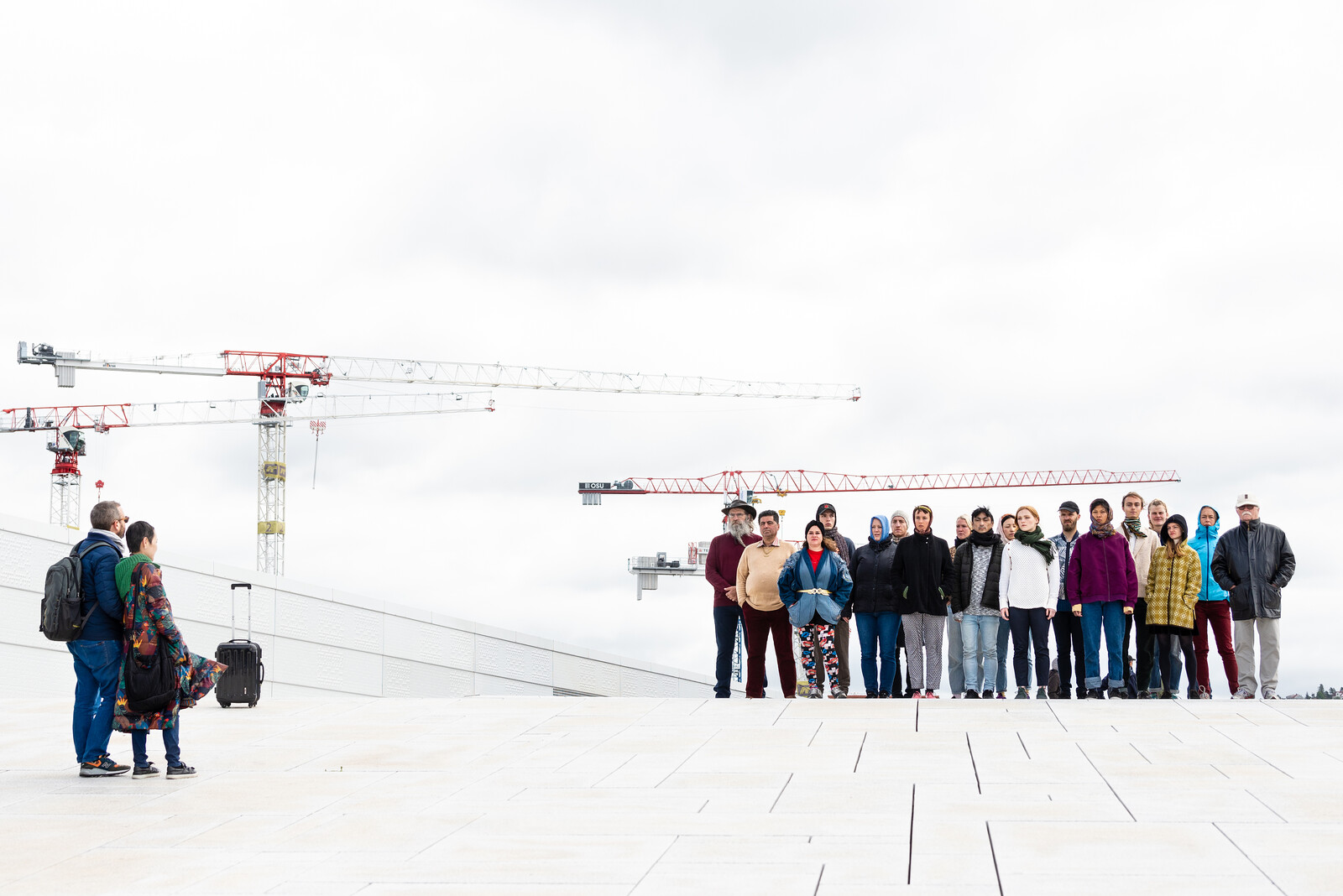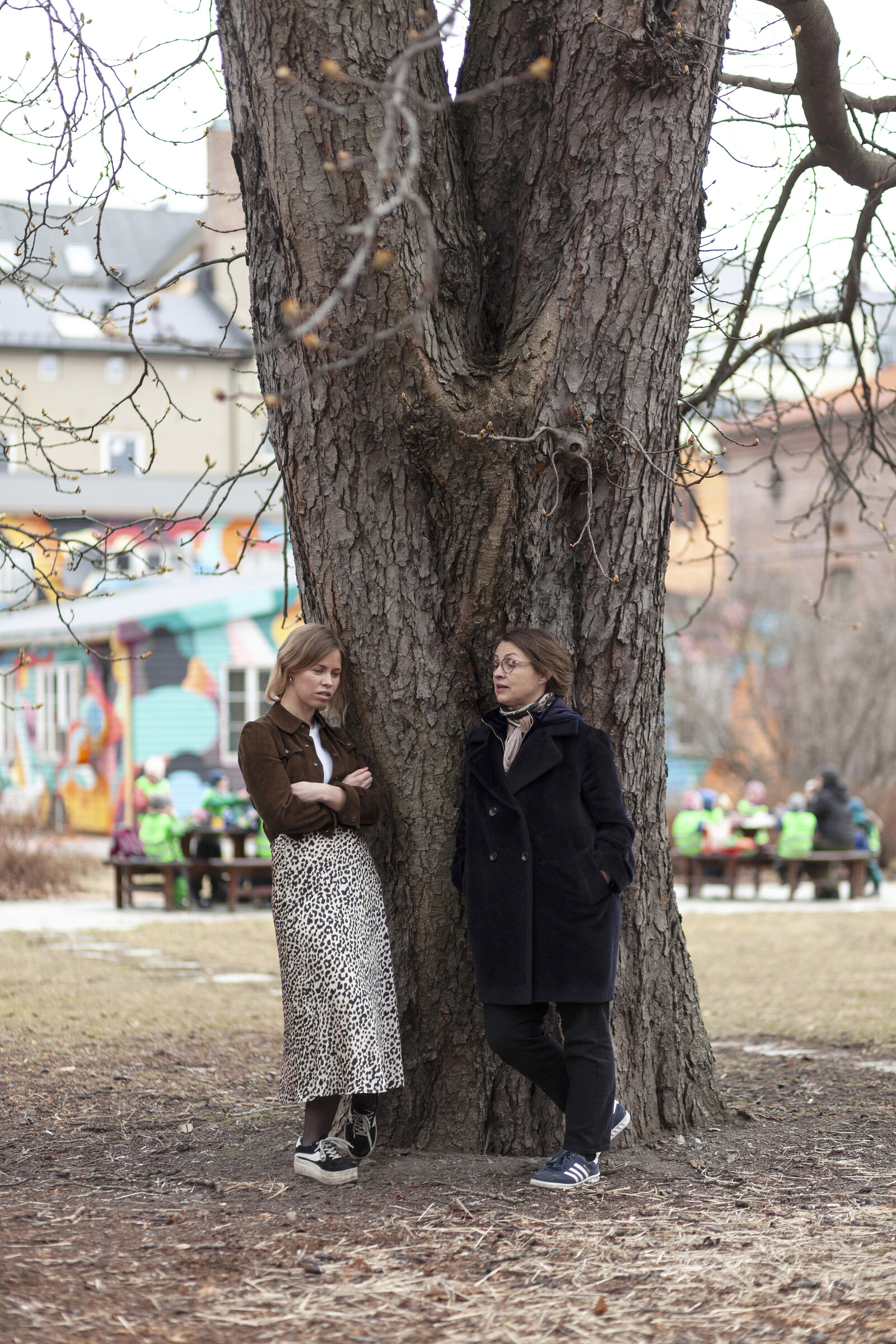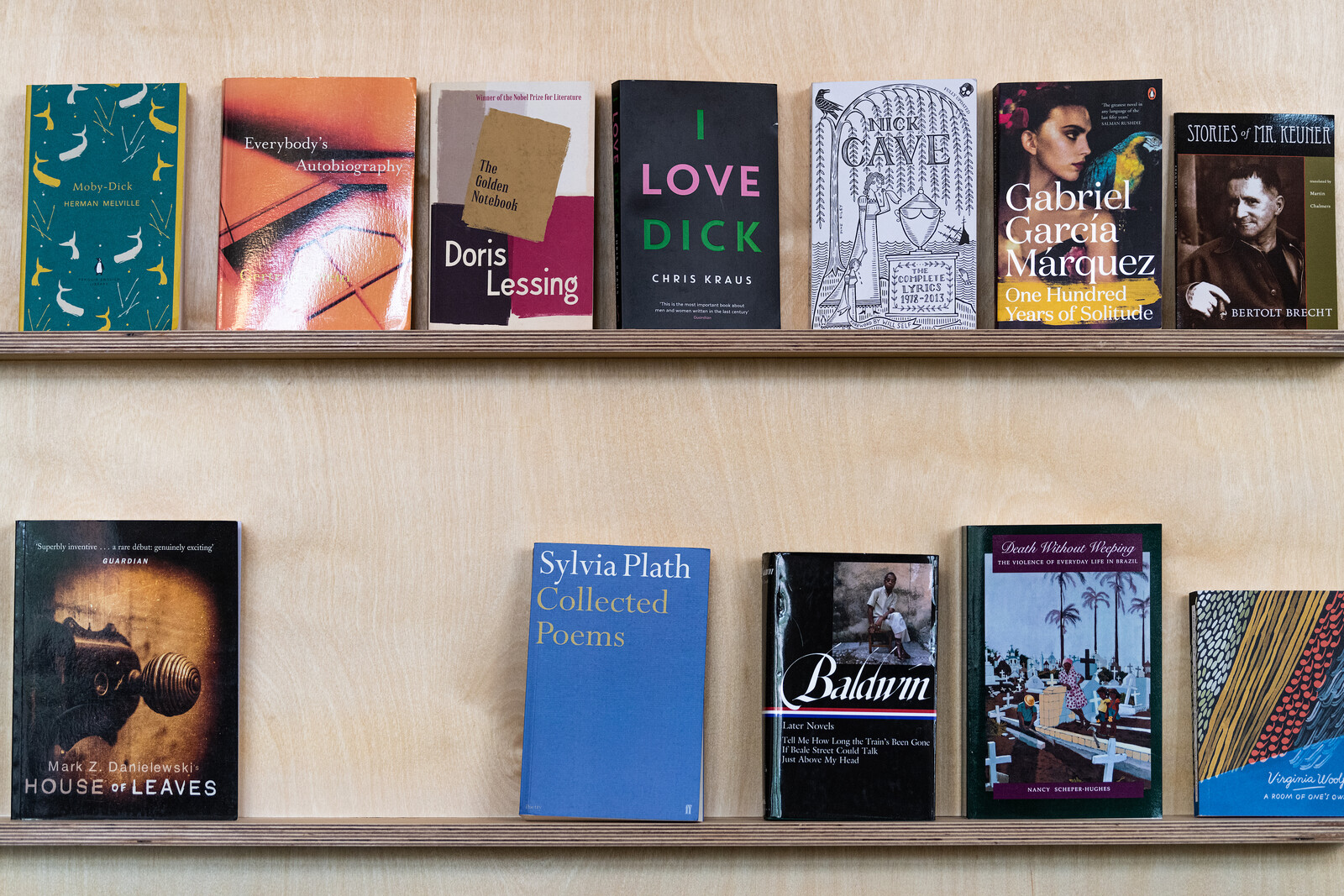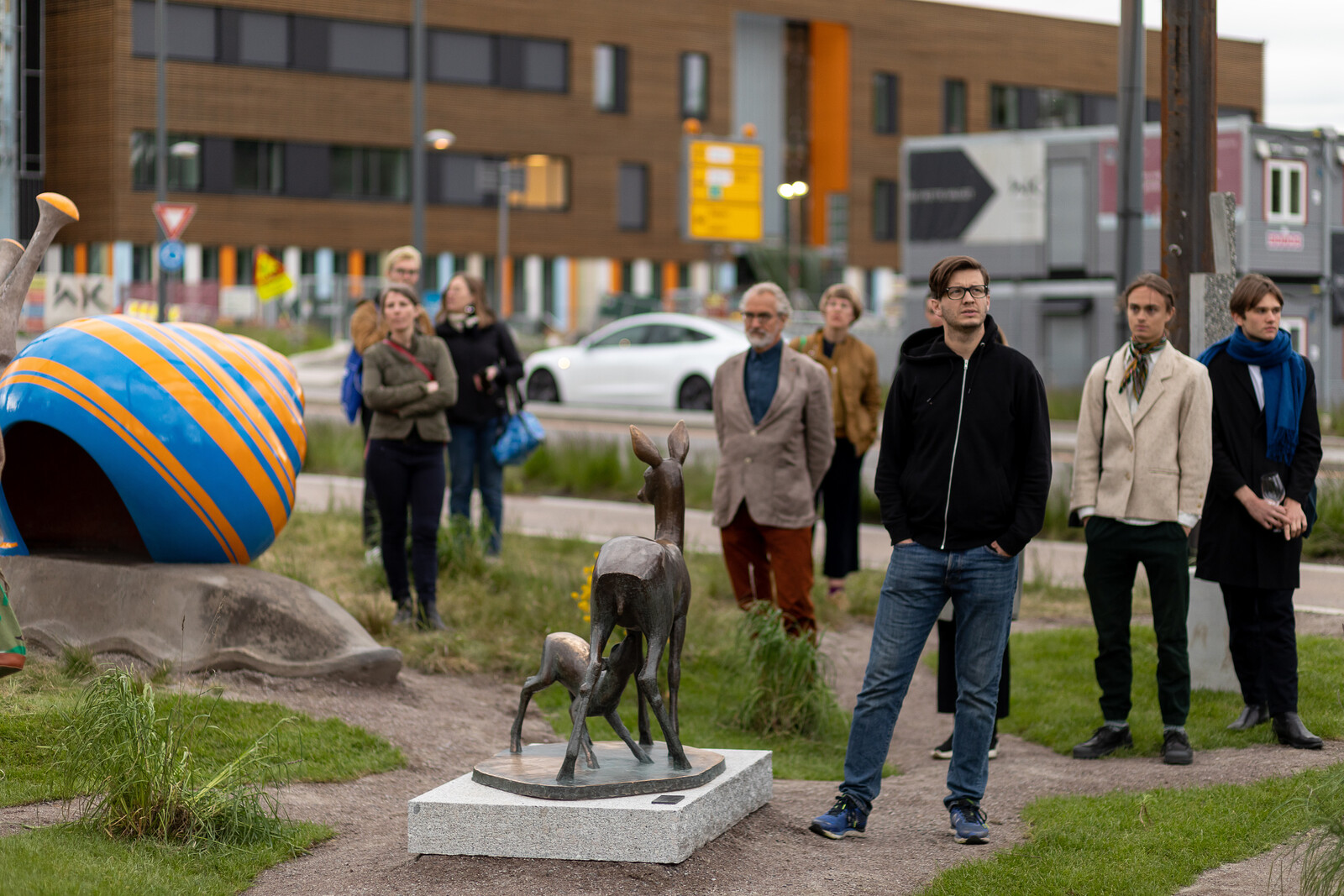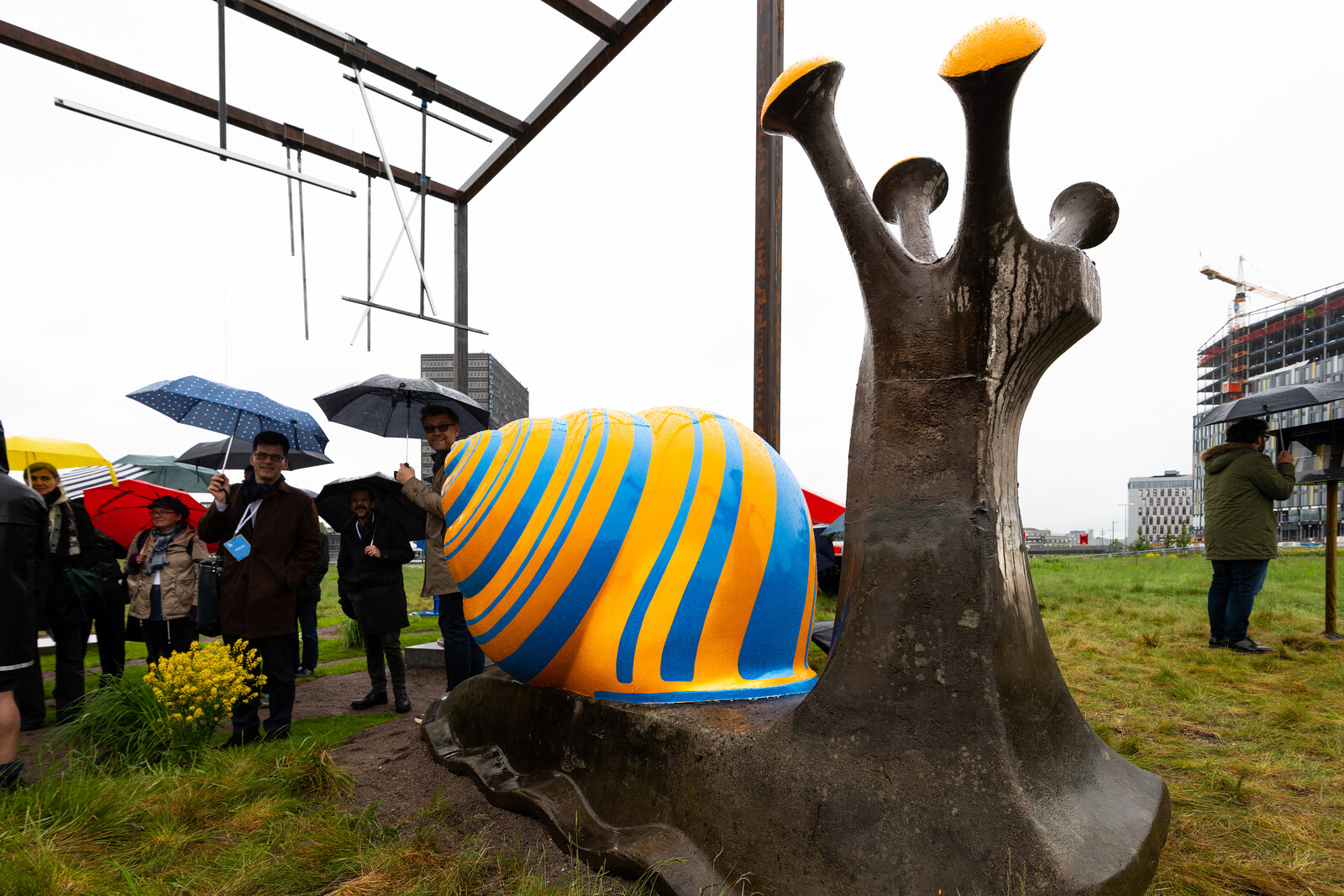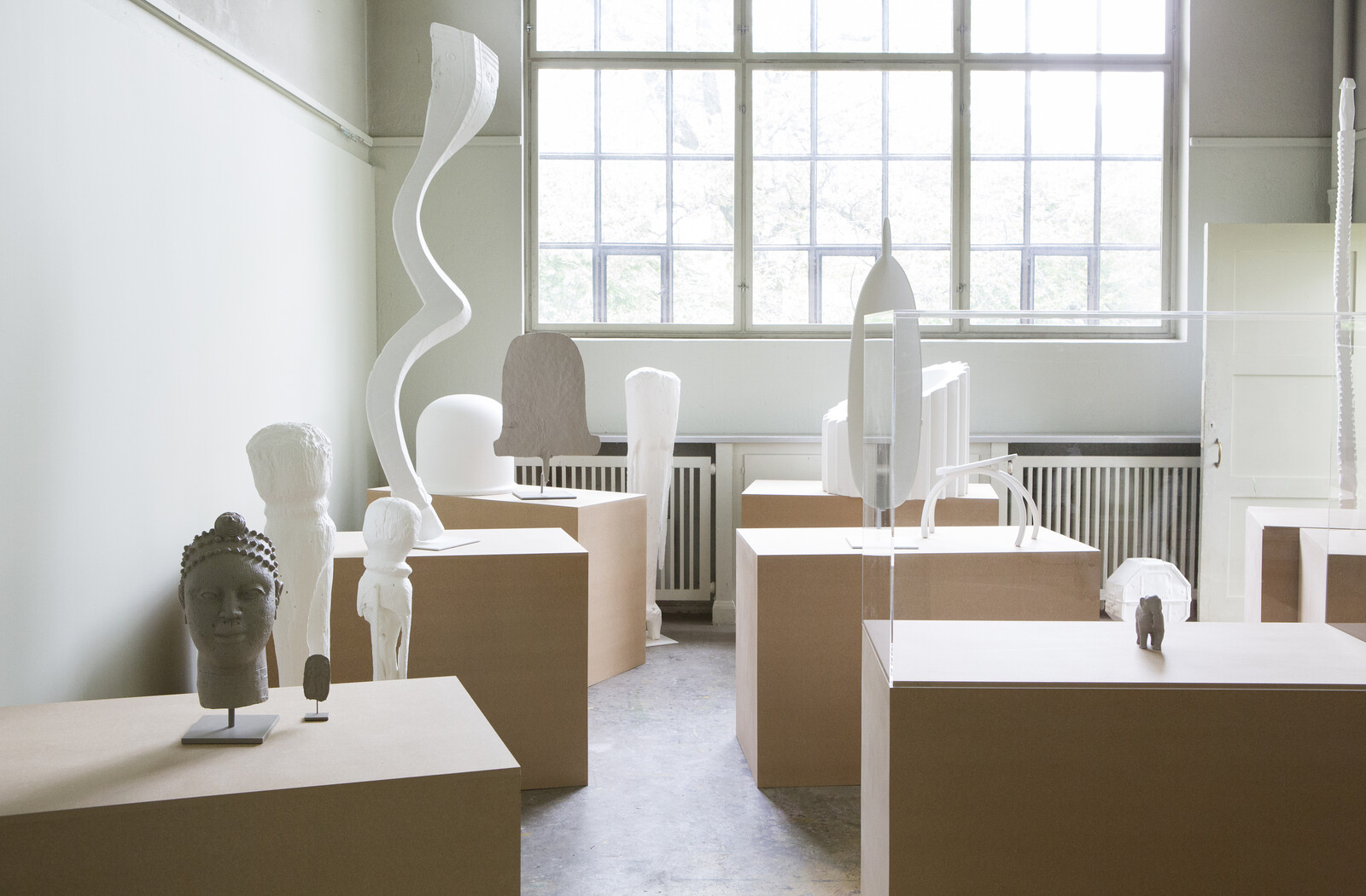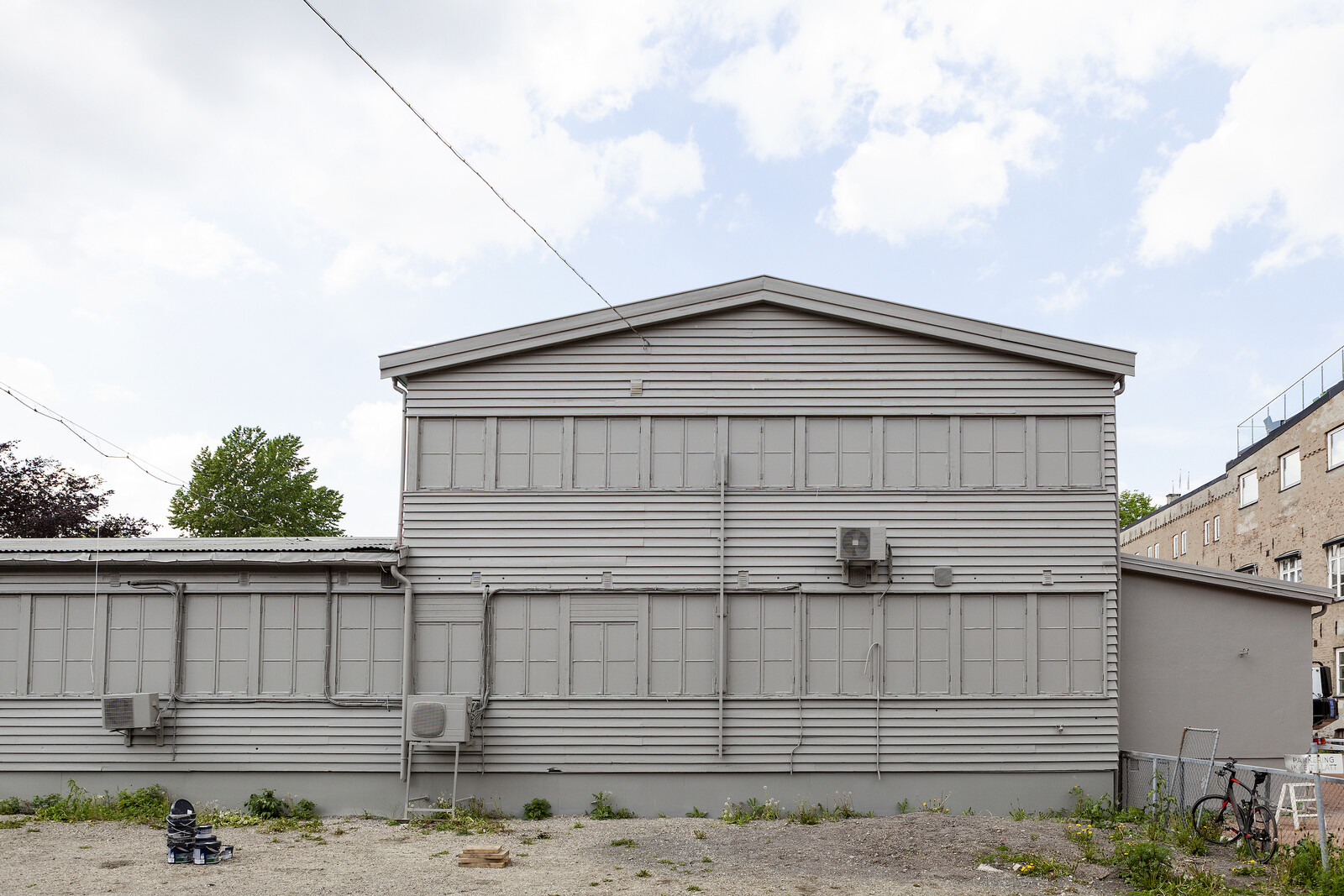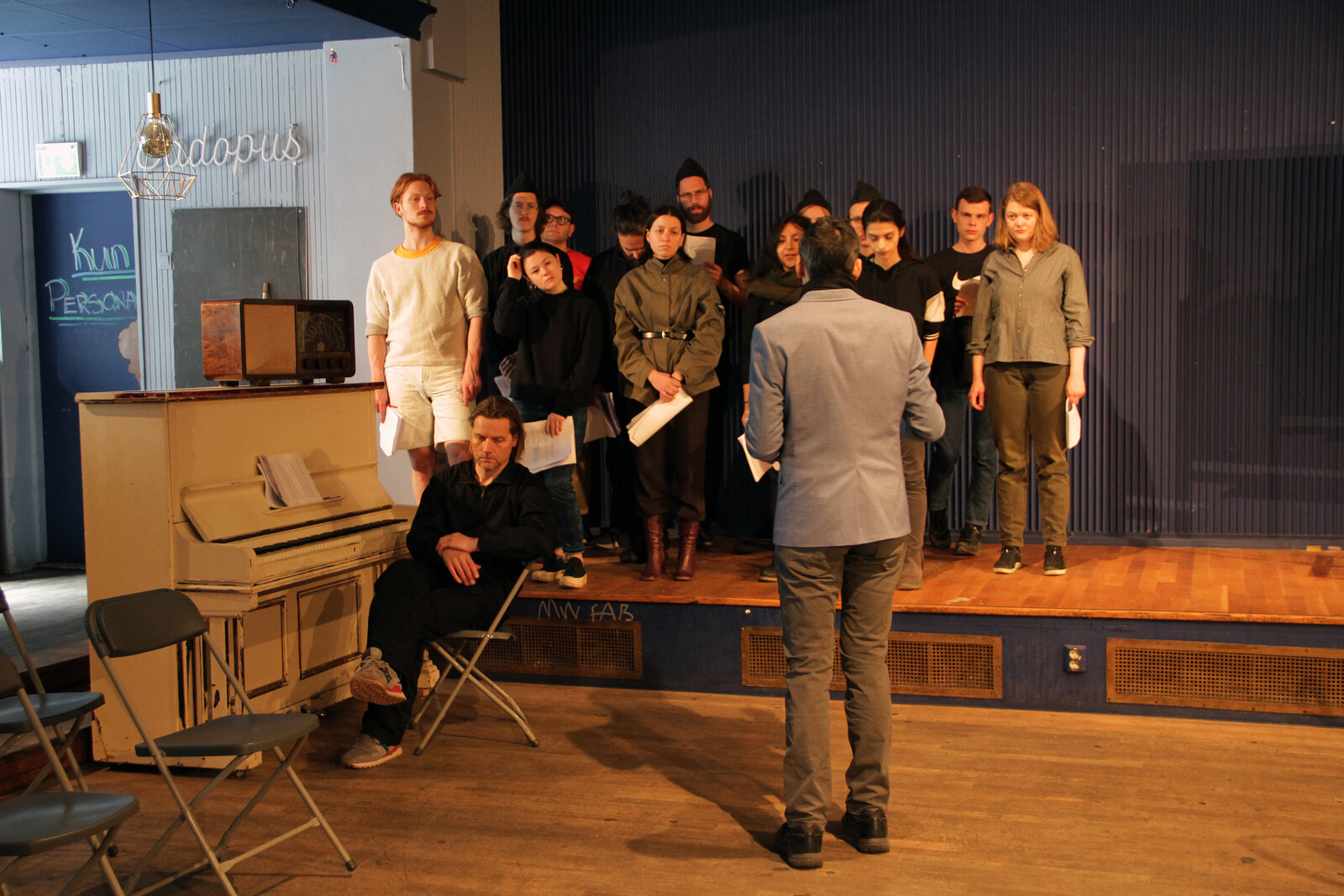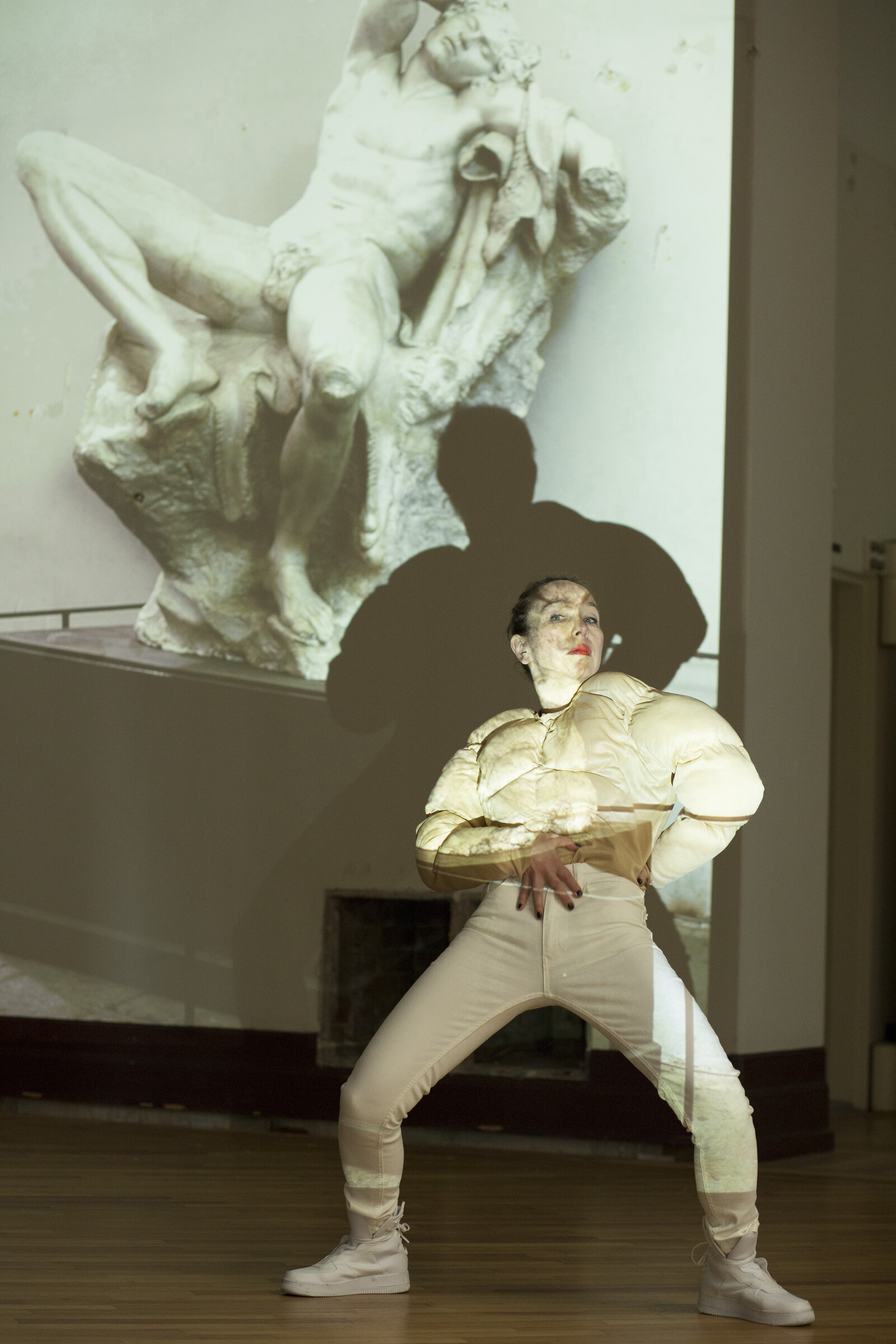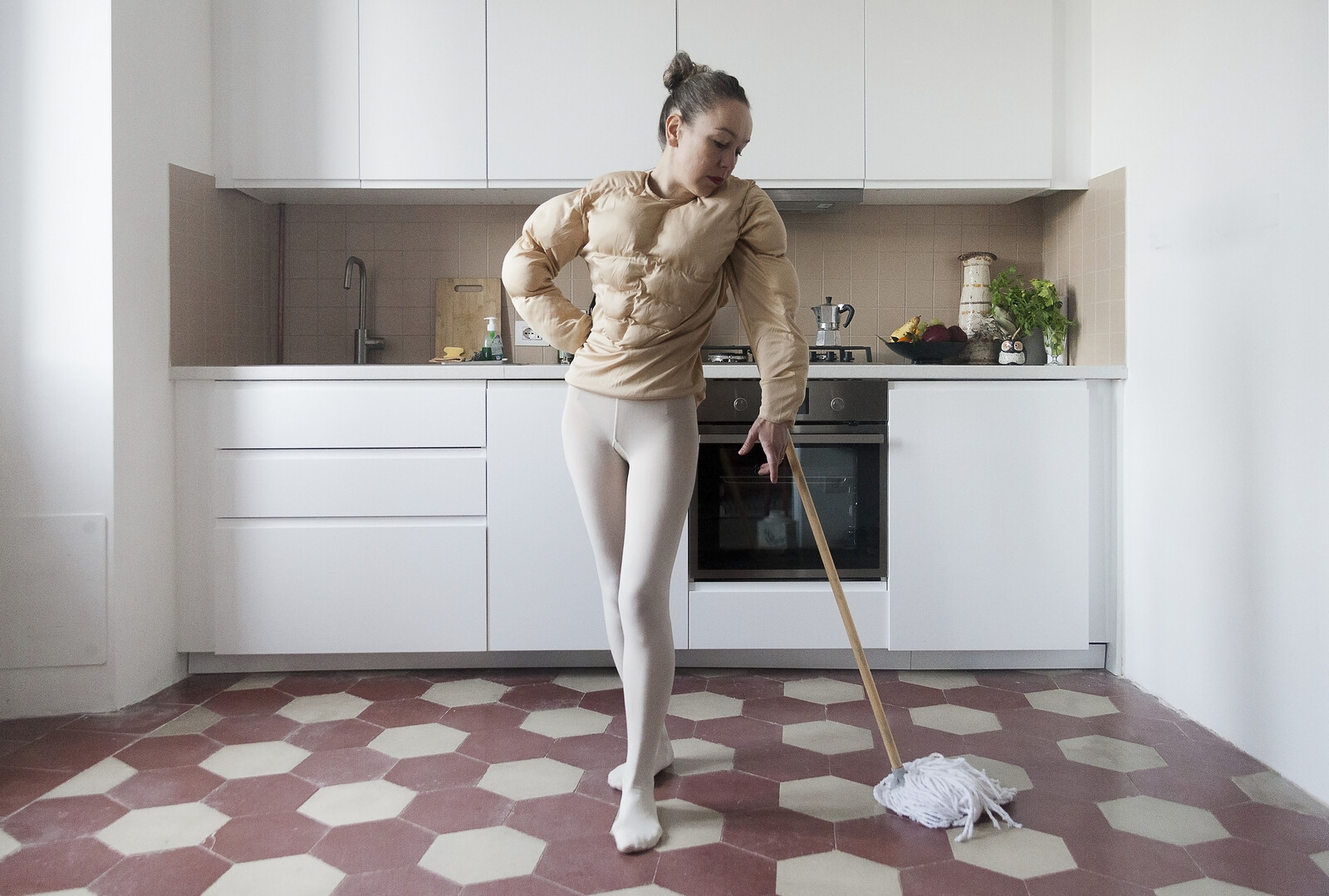“What, then, is time? If no one asks me, I know what it is. If I wish to explain it to him who asks me, I do not know. Yet I say with confidence that I know that if nothing passed away, there would be no past time; and if nothing were still coming, there would be no future time; and if there were nothing at all, there would be no present time.” Substitute “time” with “biennial” in these lines from Saint Augustine’s Confessions (397–400 CE), and you may find yourself at the inquisitive heart of the Oslo Biennial (OB)—a new infrastructure for art in public space that operates programmatically as a work in progress whose duration and outlines cannot be easily assessed.
This first edition—which, despite being called a “biennial,” will run until 2024—opened on the last weekend of May. It features 16 works, performances, and temporary projects spread around the city and the central venue in Myntgata 2, a municipally owned nineteenth-century building that hosts a visitor center, offices, film and radio production facilities, and over 60 artists’ studios. Ten new commissions will be unveiled next October, while others will be added (or reactivated in new forms) over the next four years “with different tempos and intermittences,” as explained during the inaugural ceremony by Eva González-Sancho, who co-curated the biennial with Per Gunnar Eeg-Tverbakk. To plan such an organic growth is the equivalent of a manifesto. This Oslovian newcomer to the global biennial circuit has decided to focus on the local audience and community, rather than replicating the inflated life cycle of many publicly held, privately sponsored blockbuster events. “Working with the collective, the durational and the site-specific” (as artist Dora García subtitled her keynote speech at the “Prologue Symposium” held during the biennial’s opening days) is an attempt to implement long-term sustainability. A defining feature of OB is its public funding: it is financed by Oslo’s Agency for Cultural Affairs, so the objective of investing in the “public good,” ingrained in Norwegian social democracy, is evident. But in a country whose rich and largely nationalized economy relies on the extraction of natural resources such as oil and gas, and the revenues of the world’s largest sovereign wealth fund, defining what “public” stands for is not an easy task.
OB was preceded by OP (Oslo Pilot), a two-and-a-half-year project begun in 2015 that investigated “the conditions of periodicity” and the role of art in the public sphere. One of the case studies examined during OP, Mette Edvardsen’s Time has fallen asleep in the afternoon sunshine (the title is taken from Ray Bradbury’s cult 1953 novel Fahrenheit 451), appears again in the current biennial. Started in 2010, the work comprises a library of “living books” (18 for this occasion, on rotation until the end of October) who “read” themselves from memory during one-to-one sessions.1 At an OP symposium three years ago, I was met by Against the Forgetting: Selected Poems (1994) by Hans Faverey in a quiet corner of the former Postehalle. This time, I sat with the first chapter of J. G. Ballard’s novel Crash (1973) in an intimate café at Ekeberg Park. When the book’s voice evoked the clashing of body and metal, I couldn’t help thinking of the Godzilla-like endoskeleton of the under-construction Munch Museum that I just passed on my way uphill, a glossy new scar in the urban tissue. Oslo is one of Europe’s fastest-growing cities. Its waterfront has been radically altered to accommodate rows of high-rises, especially in Bjørvika, while a new set of muscular public architectures, such as the future National Museum and the Public Library, are redefining what public space looks like—and, accordingly, what kind of art better suits its shifting conditions: Flexible? Epiphanic? Elusive?
The woodland park of Ekeberg Hill, filled with an ever-growing number of contemporary sculptures that real estate investor and art collector Christian Ringnes donated to the city in 2013, points to a conservative model—the more than 200 sculptures bequeathed to the municipality by their maker, Gustav Vigeland (1869–1943), and displayed in Frogner Park. Both are listed among the 11 locations where Carole Douillard’s performance The Viewers (2014) takes place. A small group of people, standing in a tableau vivant, gaze for hours in silent unison at passers-by. As the immediate reactions of the audience suggested, eye contact can be perceived as a dangerous trespassing of private boundaries, a menacing form of surveillance, or a friendly acknowledgement of the presence of others.
Like Vigeland, Edvard Munch willed all the works in his possession to Oslo. Gaylen Gerber’s installation Supports (2019), in Munch’s studio in Ekely on the outskirts of the city, enhances the master’s aura by subtraction. The walls are painted an impalpable gray, while the back room displays a series of objects (ranging from 2000 BCE Sumerian artifacts to a film canister with labels for Walt Disney’s Pinocchio [1940]) painted white or gray to “emphasize our understanding of history as always existing in the present,” he writes. In the courtyard of Myntgata 2, Gerber painted a large wooden barrack built by the Nazi occupiers and later used by the Norwegian Intelligence Service in gray. It’s the last unlisted building in the city center: by turning it into a monochrome, Gerber highlights the presence of this forgotten “gray area.”
Oslo Collected Works OSV (2019) is a surreal pavilion installed by Jan Freuchen, Jonas Høgli Major, and Sigurd Tenningen in a large roundabout in Hovinbyen, the city’s newest development area. It brings together, as if in a fairy tale, an odd family of sculpted animals—a deer, a wild boar, a giant snail, a modernist bird—selected from the vast collection of outdoor pieces owned by the city. What is to be done, they ask, with the old (and recyclable) before producing more of the new? Marianne Heier’s performance And Their Spirits Live On (2019), staged in the empty rooms of the former Museum of Contemporary Art, questions what dictates the value of historical and present art with her. “But which story applies, and in what tone of voice is it told? With what accent, and what sociolect?,” Heier asks, dressed in a Styrofoam costume of a Neoclassical statue. “A political umbilical cord connects us to an imagined, to some extent freely invented past.” Other projects reflect on what welfare ultimately consists of. Øystein Wyller Odden’s sound piece Power Line Hum (2019), composed for Oslo’s City Hall, reactivates the building’s original organ pipes to amplify the otherwise imperceptible sound generated by the flux of electric current, which constantly changes in response to the supply and demand of the energy market. In Other artists (2019), Lisa Tan renovates the chilly toilets of Myntgata 2. Along the stairs, visitors can pick up a postcard, quoting a text by Tom Burr: “Our ideas […] seem to need the company of each other. There is a politics to placement, and alignment, and company.”2
Now that political times are a-changin’ and populism hammers at the social safety net, this biennial’s desire to shape perception of Oslo’s public space as open to unexpected encounters acts against a growing fear of alienation. It’s telling that the current edition of Momentum—another Nordic biennial taking place an hour along the Oslofjord—is titled “The Emotional Exhibition.” Love lies also at the root of the word “amateur.” Back at OB, National Episodes: Grini and the Futures of Norway (2019), the first chapter of an upcoming series of short amateur theater pieces inspired by the Agitprop of the 1920s and ’30s and interpreted by collective artist persona Rose Hammer, brought poems and group songs to the main room of the old Construction Workers’ House at Hammersborggata 19/21.3 The play reconstructs a crucial moment for the birth of Norwegian social democracy: the meeting held in 1945 in the Grini detention camp in Bærum, in the suburbs of Oslo, between representatives of the Labor and Conservative parties, to discuss the country’s destiny after the Nazi occupation. “We may easily end up romanticizing a past that has little to do with the current social and political conditions,” notes a Rose Hammer member in conversation with Sven Lütticken.4 But “perhaps these collective measures can strengthen our own defenses against the mechanisms that aim to isolate the individual from its fellow human beings.” Augustine wrote that based on past impressions we can “further construct future actions, events, and hopes.” Art and old-school poetic justice as a training-in-progress in cultural resistance.
Tom Burr, press release for “Now I am quietly waiting” at Bortolami Gallery, New York (September 14–October 24, 2019), https://cargocollective.com/marysimpson/Now-I-am-quietly-waiting.
Rose Hammer is: Kim Svensson, Emilie Birkeland, Élise Guerrier, Alma Braun, Mattias Hellberg, Niels Munk Plum, Jakob Tamm, Arely Amaut Gomez Sanchez, Evelin Sillén, Emil Andersson, Alessandro Marchi, Stacey de Voe, Nora Joung, Victoria Durnak, Morten Langeland, Sara Hermansson, Sahar Seyedian, Qi Tan, Ole-Petter Arneberg, Per-Oskar Leu, and Dora García, with the support of Alex Gifreu and Samir Kandil.
Sven Lütticken, “The Name of the Rose — Fragments from a conversation with Rose Hammer,” published online by the Oslo Biennial (2019), www.oslobiennalen.no/app/uploads/2019/05/Lutticken_Rose_Hammer_ENG.pdf.
